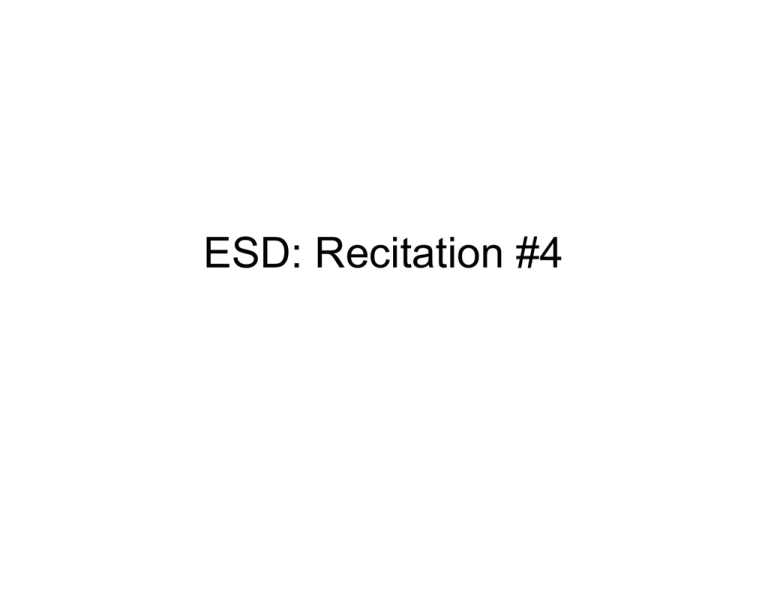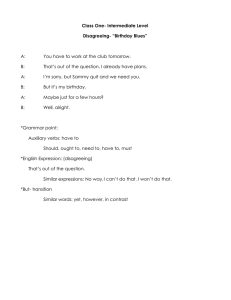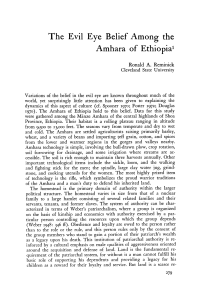Document 13567582
advertisement

ESD: Recitation #4 Birthday problem An approximate method • Bernoulli trials • Number of trials to compare birthdays of all people in the class: n! n! N= = (n ! 2)!2! 2(n ! 2)! • Probability that nobody has the same birthday than someone else: n! ! N $! 1 $ 0 ! 364 $ N ! 364 $ N ! 364 $ 2(n'2)! P0 = # &# &# & =# & =# & 0 " 365 % " 365 % " %" 365 % " 365 % The exact solution • Probability that nobody has the same birthday than anybody else: " i % 365! P0 = ($1! '= n # & 365 365 (365 ! n)! i= 0 n!1 What was the average travel distance between two random points in Budapest in the 1850s? Budapest = Buda + Pest Photo removed due to copyright restrictions. The Danube River through Budapest, showing the two shores. Only one bridge: Széchenyi Lánchid (Chain bridge) Source: Wikipedia Modeling lP Pest: λP wP u wB v 202 m Buda: λB lB Within each city • In Buda: PB !B 2 # & w B .lB ."B =% ( w .l . " + w .l . " $ B B B P P P' 1 DB = (w B + lB ) 3 • In Pest: PP !P 2 # & w P .lP ."P =% ( $ w B .lB ."B + w P .lP ."P ' 1 DP = (w P + lP ) 3 Between the two cities • 4 cases: (1) (2) (3) (4) Between (1) and (3) • Probability: w P .lP ."P .w B .lB ."B u.v P(1)!(3) = 2 2 # (w B .lB ."B + w P .lP ."P ) lP .lB • Average Distance: 1 1 D(1)!(3) = (w B + v) + (w P + u) + 202 2 2 Between (1) and (4) • Probability: w P .lP ."P .w B .lB ."B u.(lB ! v) P(1)!(4 ) = 2 2 # lP .lB (w B .lB ."B + w P .lP ."P ) • Average Distance: 1 1 D(1)!(4 ) = (w P + u) + (w B + (lB ! v)) + 202 2 2 And continue… • Between (2) and (3) • Between (2) and (4) • Get the final answer… More complications • There is currently ten bridges on the Danube. • How does average traveling distance change if we build another one? Bertrand’s Paradox Joseph Louis François Bertrand (1822-1900) Wrote Calcul des probabilités in 1888. The question • Consider an equilateral triangle inscribed in a circle. Suppose a cord of the circle is chosen at random. • What is the probability that the chord is longer than a side of the triangle? Random endpoints Figure by MIT OCW. Random radius Figure by MIT OCW. Random midpoints Figure by MIT OCW. Barbershop • One barber, two chairs for waiting customers. • Prospective customers arrive in a Poisson manner at the rate of λ per hour. • It takes the barber 1/µ on average to serve a customer. • Prospective customers finding the barbershop full are lost forever. • What is the average number of customers? Model λ 0 λ 1 µ λ 2 µ λ = 2.µ 3 µ Solving (1) • What is the probability that N customers are in the barbershop? ! ! P1 = P0 ;P2 = P1 µ µ " ! %N PN = $ ' P0 #µ& ! 1) 3 µ * Pi = 1 ( P0 = " %3+1 ! i= 0 1) $ ' #µ& Solving (2) • Average number of customers: ! 1( " ! %3 23 µ PN = $ ' 3+1 = 4 2 (1 "!% #µ& 1( $ ' #µ& 3 34 E[Nb _ customers] = ) i.Pi = * 2.2667 15 i= 0


